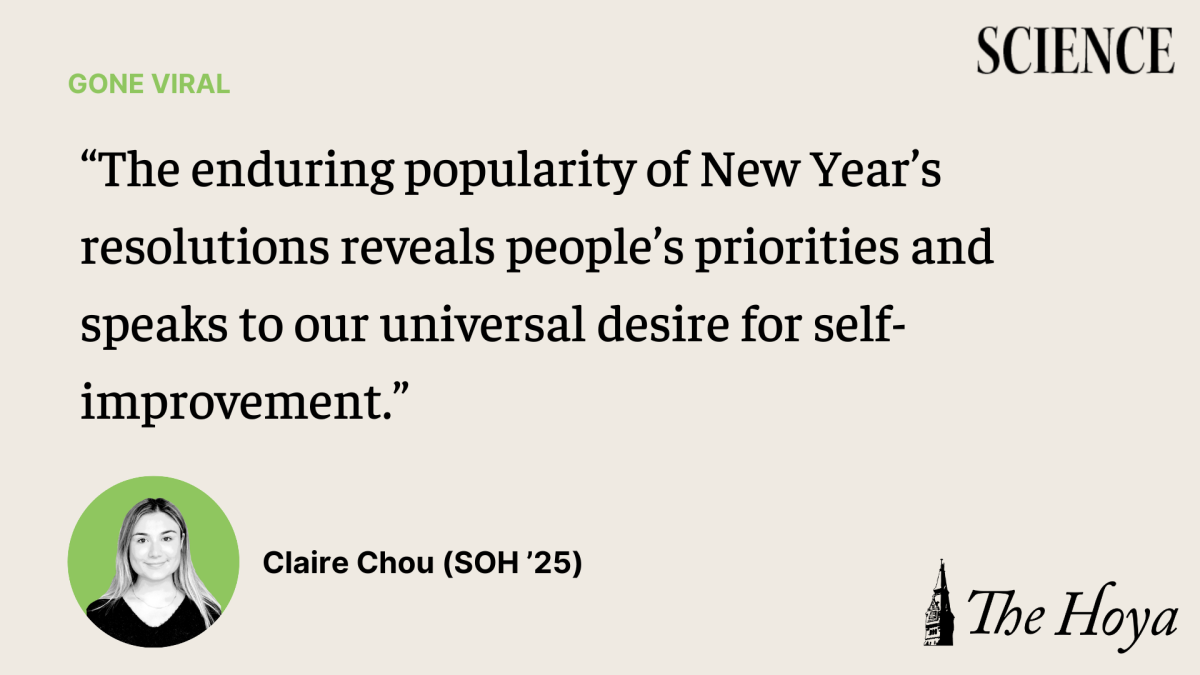Every year, around 100 million Americans set New Year’s resolutions, but only 8% of Americans stick with them for the entire year. This far-reaching tradition highlights the compelling nature of new beginnings, while simultaneously presenting a paradox: we are initially enthusiastic about our ambitious resolutions, but it becomes increasingly challenging to sustain them — leading us to abandon our goals. Still, techniques including setting concrete, proximal and approach-oriented goals provide hope as we start anew.
The practice of setting goals each year is a trend that has persisted through time. For as long as there has been written language, anthropologists can find evidence of New Year’s resolutions. However, while ancient Babylonians made promises to their gods and kings, the practice of New Year’s resolutions has evolved into a more secular form of self-improvement.
According to a YouGov poll, one-third of U.S. adult citizens planned to make resolutions for 2024. This percentage was notably greater for college-aged adults, with 52% of adults under 30 making resolutions. In general, people who live in North America or Europe are more likely to make New Year’s resolutions than people in Africa or Asia. Recent polls have shown that only 12-18% of people in Sweden, for example, tend to set New Year’s resolutions, compared to 44% in the United States.
New Year’s resolutions often target behavioral changes intended to positively influence our physical and mental health. In fact, the International Health, Racquet and Sportsclub Association reports that nationally, 12% of gym memberships begin in January, while 8.4% begin during the rest of the year. Interestingly, resolutions for 2023 held mental health as a greater priority than physical health, on average. However, this trend was reversed in resolutions for 2024, with physical health superseding mental health goals. Current events also influence our New Year’s resolutions. For example, rising gas prices in 2023 led to 2024 resolutions related to saving money to skyrocket.
The psychology behind viewing a new year as an opportunity for self-improvement has to do with a concept called “temporal landmarks,” planning things around special dates. People tend to associate negative traits or failures with their past selves to remain confident in their current selves. By creating distance between our past and current selves, temporal landmarks can increase our motivation to change. For example, it may be easier to start a new habit on a Monday rather than a Friday. “Transition points,” such as the beginning of a month or semester, personal milestones like a first date or a wedding or recurring special events like birthdays can also facilitate goal-setting behavior, according to the Association for Psychological Science.
Unfortunately, as many as 80% of people fail to keep their resolutions by February. That being said, we can craft goals strategically to help us follow through with our resolutions. Concrete goals are more productive than ambiguous ones. For example, “I’ll go on the treadmill four times a week” is better than “I’ll exercise more.” Additionally, proximal goals, or goals that are easily within reach, foster more “personal efficacy and intrinsic interest” than distal goals, which seem less attainable. Emphasizing “bite-sized” goals, or setting goals in increments, can also be more effective for long-term success. Similarly, studies have shown that approach-oriented goals — “I will go to the gym” — yield better odds of commitment than avoidance-oriented goals — “I won’t break my diet.”
The enduring popularity of New Year’s resolutions reveals people’s priorities and speaks to our universal desire for self-improvement. While capitalizing on a “fresh start” is often an elusive tradition, consider revising your resolutions into a more approachable action plan. And even if you don’t achieve the goal itself, making goals is still a positive: experts find that the practice of creating a resolution strengthens the part of your brain responsible for figuring out how to meet your goals. As you proceed with your New Year’s resolutions this February, remember to also embrace the journey.









